Finding a truly comfortable scooter is hard. Bumpy rides and bad seats make daily trips painful. But the right features can deliver a smooth, enjoyable ride every single day.
The most comfortable mobility scooters for everyday use are typically larger, non-foldable models. They feature advanced suspension, large pneumatic tires, and well-padded captain's seats, providing superior stability and ride quality on various surfaces. However, their size is a key trade-off.
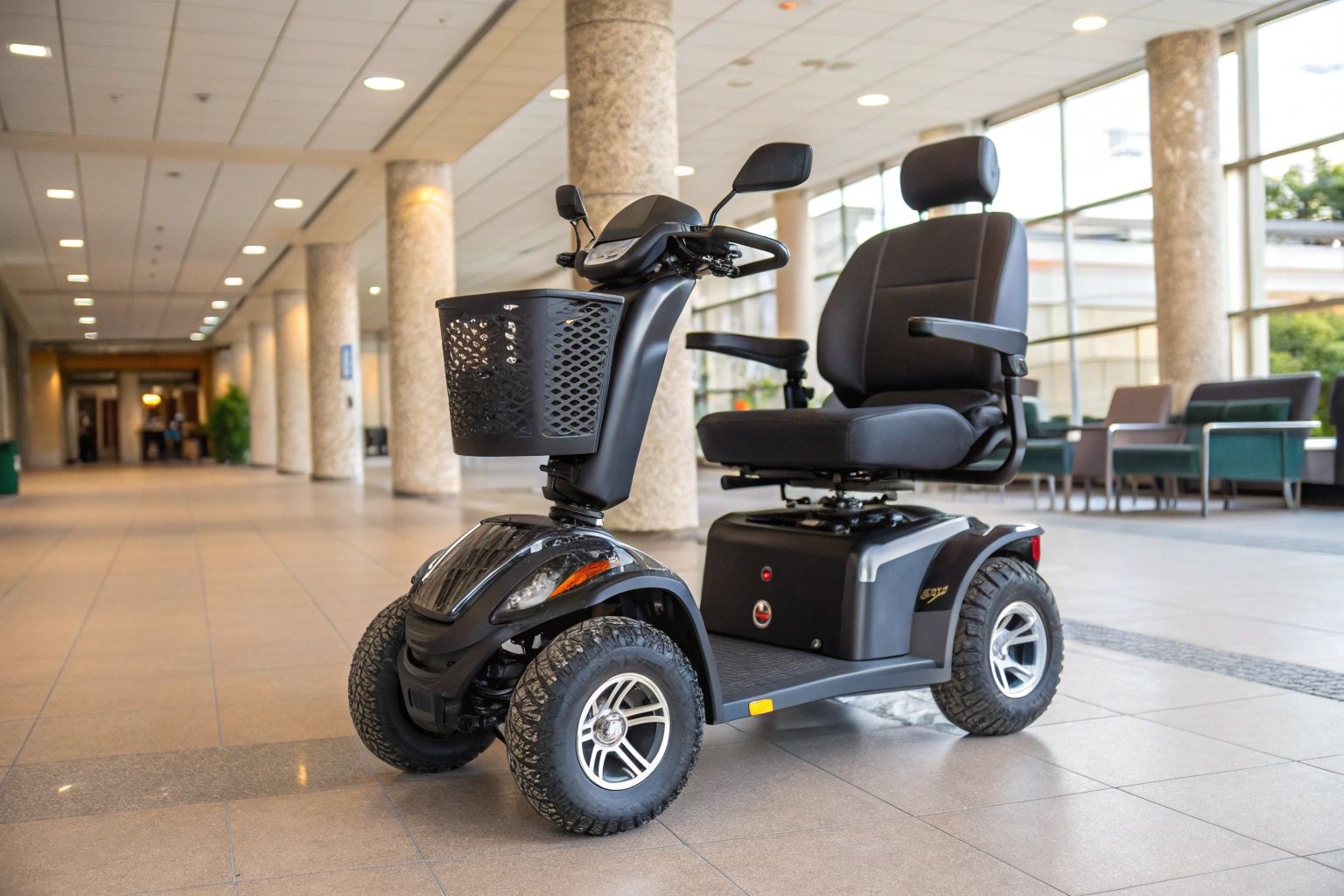
So, larger, heavy-duty mobility scooters offer the best comfort. But what specific features should you, as an importer or distributor, look for when sourcing them for your market? It's not just about size. The details in the seat, the suspension, and even the handlebars make a huge difference in the user's daily experience. A scooter that looks powerful but feels harsh to ride won't get good reviews or repeat customers. Let's break down exactly what creates a comfortable ride, so you can make a better choice for your clients and your business.
How much do seat design, armrest width, and ergonomic handlebars matter?
Many importers focus on battery and motor specs. They forget the user's actual touchpoints. This results in scooters that look good on paper but feel terrible to ride daily.
These components are critical for user comfort. A padded, adjustable captain's seat prevents fatigue. Wide, adjustable armrests offer support. Ergonomic delta tillers or handlebars reduce strain on the hands and wrists, making control easier and more comfortable over long periods.
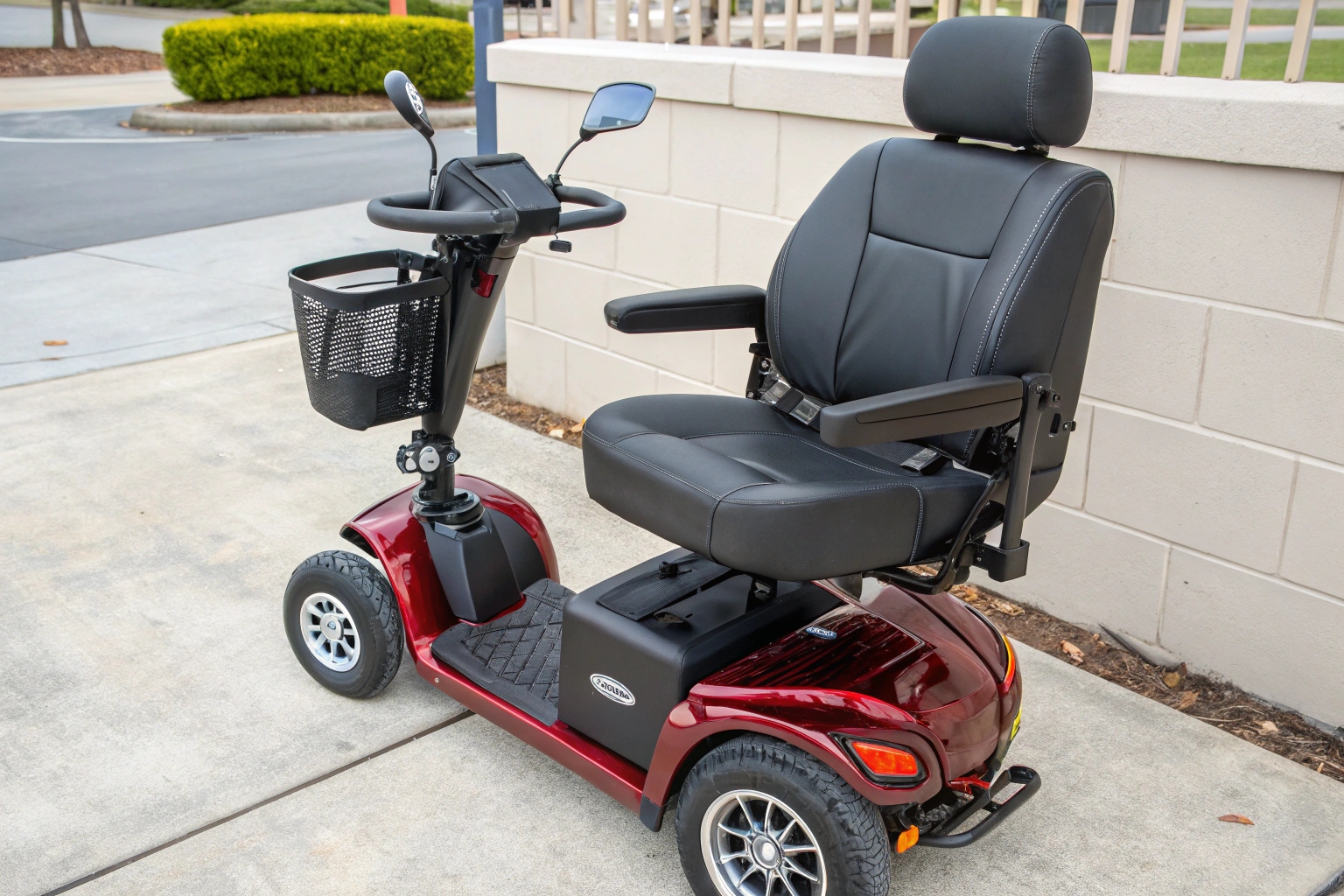
Based on my experience shipping thousands of units, the ergonomic features are what separate a good scooter from a great one. These are the parts of the vehicle the user interacts with constantly. Skimping here is a common mistake I see from new importers trying to lower the initial cost. Customers, especially elderly users or those with arthritis, will notice the difference immediately. A cheap, hard seat causes discomfort in minutes, not hours. Handlebars that force an awkward wrist angle cause fatigue and reduce control. I always tell my B2B clients that investing in better ergonomics is investing in customer satisfaction and brand reputation. Let's look at the key components.
The Seat, Armrests, and Handlebars
A quality ergonomic setup is a system where each part supports the others to create a comfortable, low-strain riding position.
| Tampok | Basic Scooter Standard | Premium Comfort Standard |
|---|---|---|
| Seat Type | Small, thinly padded, fixed backrest | Large, swiveling "Captain's Style" with adjustable height and backrest |
| Armrests | Fixed, narrow, minimal padding | Padded, adjustable for both width and height to fit the user |
| Handlebars | Simple T-bar style | Wraparound "Delta Tiller" for multiple grip options |
A swiveling captain's seat makes getting on and off the scooter much easier and safer. Adjustable armrests ensure the user's arms are supported, reducing shoulder and back strain. A delta tiller allows the driver to use their whole hand to steer, not just their fingers, which is a huge benefit for anyone with limited hand strength.
What kind of suspension systems make a real difference of mobility scooter?
Every crack in the sidewalk feels like a jolt. This isn't just annoying; for elderly users or those with chronic pain, it's jarring and can make them afraid to go out.
Full suspension systems, with independent shocks on both the front and rear wheels, make the biggest difference. Unlike models with no suspension or only rear suspension, a full system absorbs impacts from uneven surfaces, providing a much smoother and more stable ride.
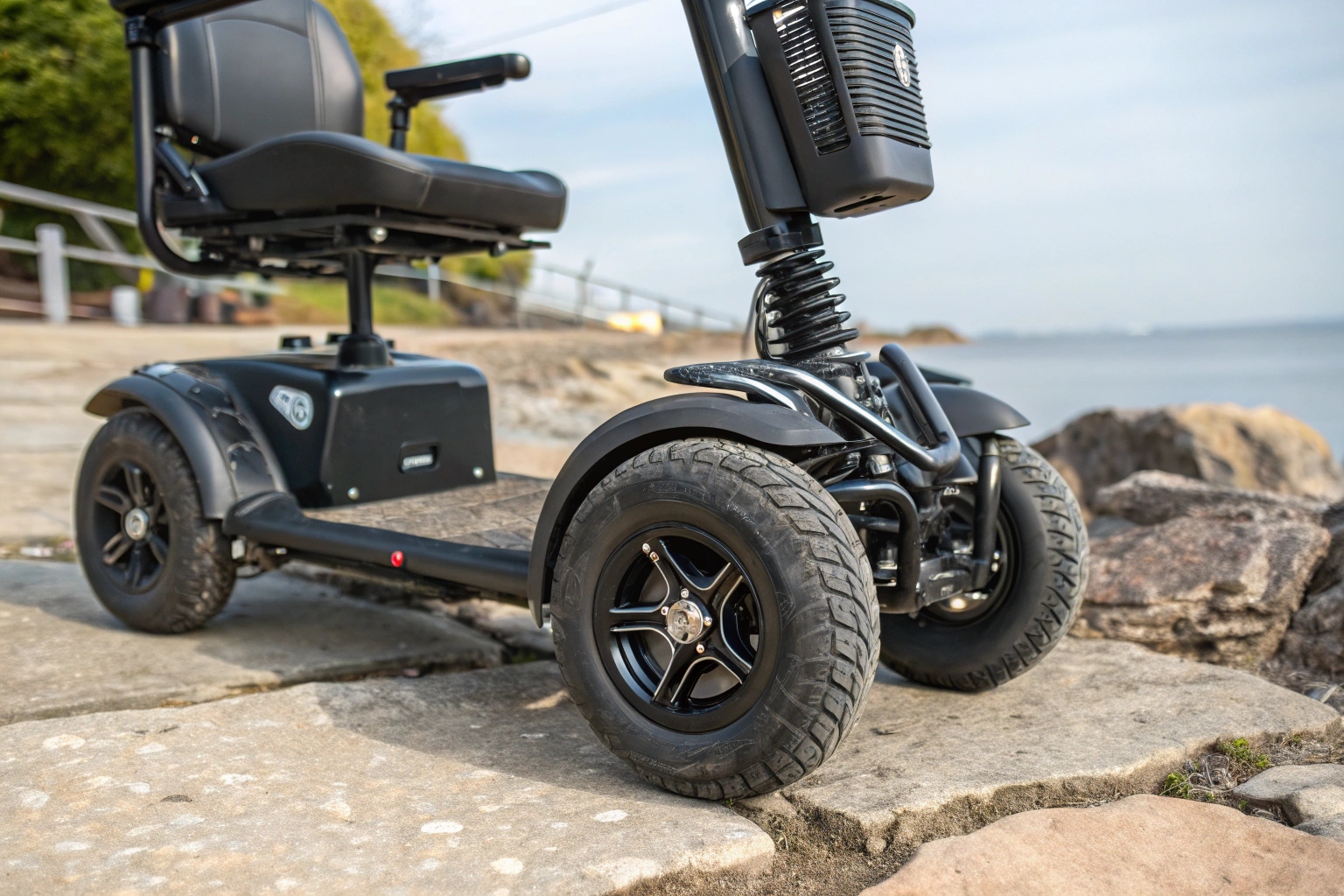
On the factory floor, we test scooters on a variety of surfaces, from smooth concrete to rough, uneven ground. The difference suspension makes is night and day. A scooter with no suspension feels every single imperfection in the road. It's a harsh, rattling experience. This is acceptable for a small, portable scooter used exclusively indoors in a mall, but it's terrible for everyday outdoor use. Adding rear suspension helps a little, but the front wheels still chatter and send vibrations up through the steering column. A full, four-wheel suspension system transforms the ride. It allows each wheel to move up and down independently, isolating the frame and the rider from bumps. When you pair a full suspension system with large, pneumatic (air-filled) tires, you get the gold standard for comfort. Solid, foam-filled tires are great for puncture-proofing, but they provide zero cushioning. For a truly comfortable model, I always recommend full suspension and pneumatic tires.
Suspension Types Explained
| Suspension Type | Rider Experience | Pinakamahusay para sa |
|---|---|---|
| Wala | Harsh, bumpy ride. Every crack is felt. | Smooth indoor surfaces only (e.g., shopping malls). |
| Rear Only | Some improvement, but front-end vibration is still high. | Light outdoor use on well-paved sidewalks. |
| Full (Front & Rear) | Smooth, stable, and comfortable ride. | All-around daily use, uneven pavement, parks, and light trails. |
Which mobility scooters are best for long-distance daily commuting?
Worrying about your battery range on a long trip is stressful. This "range anxiety" can keep users at home, defeating the very purpose of owning a mobility scooter in the first place.
The best mobility scooters for long-distance commuting are large, robust models with high-capacity batteries (over 50Ah). These scooters often feature more efficient brushless motors, larger pneumatic tires for a smoother ride, and a full comfort package including a captain's seat and suspension.
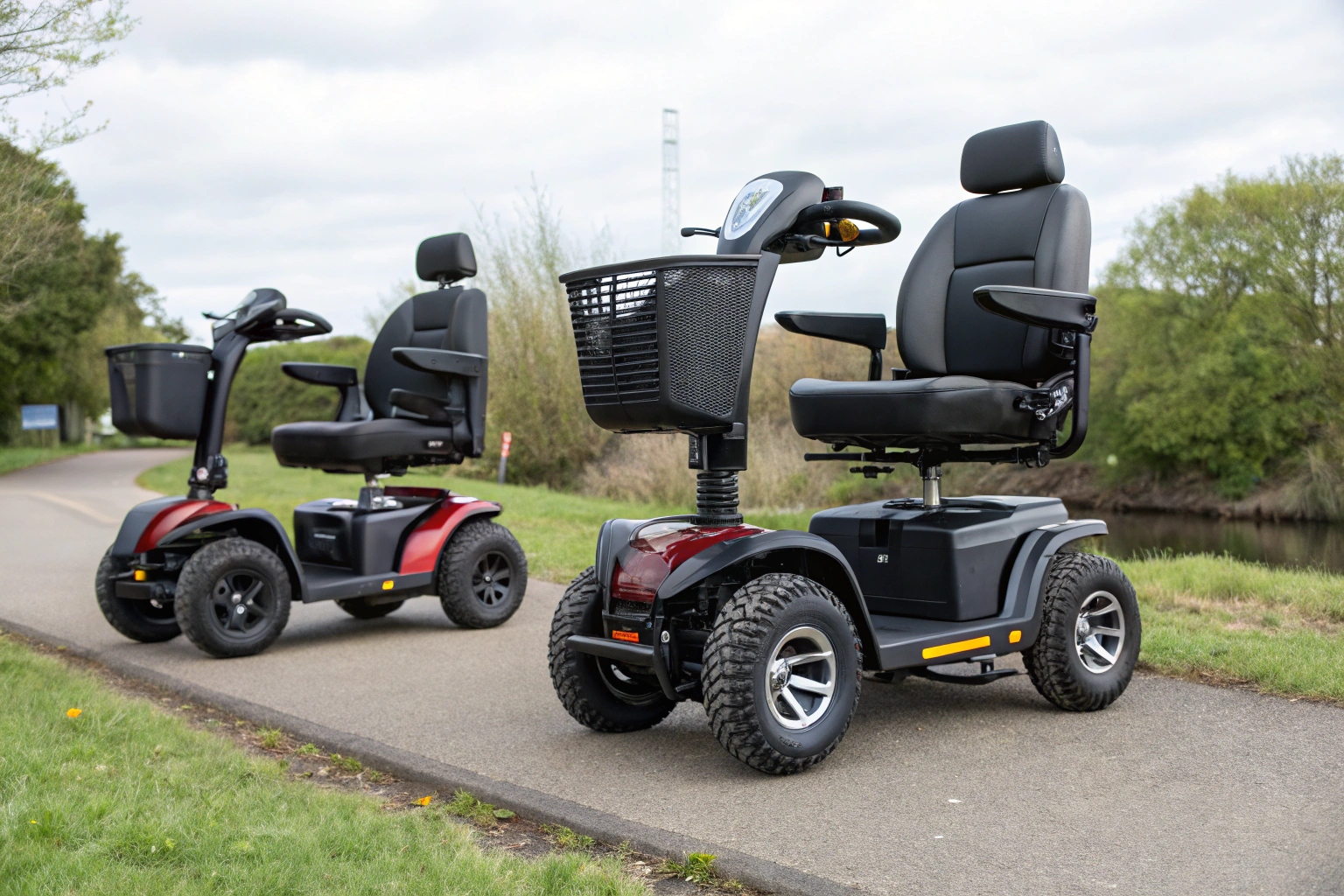
When a client asks me for a long-distance model, the conversation immediately turns to the battery. This is the heart of the scooter's range. Lead-acid batteries are the traditional, cost-effective choice. They are heavy but reliable and perform well in our larger scooter models. A typical setup for long range would be two 12V 45Ah (or larger) lead-acid batteries. For importers looking to provide a more premium, lightweight option, lithium batteries are the answer. A single lithium battery pack can offer the same range as two lead-acid batteries at less than half the weight. This is a huge benefit if the user needs to remove the battery for charging. Of course, this performance comes at a higher unit cost. I recently worked with a distributor in Australia who wanted to market a scooter for residents in retirement villages to travel to a town center 8km away. We settled on a model with a 52Ah lead-acid battery system. The weight wasn't an issue, but the guaranteed 45km+ range and lower price point were perfect for their market.
Key Specs for Commuter Scooters
| Tampok | Short-Range / Portable | Long-Distance / Commuter |
|---|---|---|
| Battery Capacity | 12Ah - 20Ah | 25 Ah - 45Ah |
| Typical Max Range | 10 - 20 km | 30 - 40 km |
| Motor Type | Standard Brushed | High-Efficiency Brushless |
| Comfort Features | Basic seat, minimal suspension | Captain's seat, full suspension |
How does comfort affect mobility scooter safety and stability?
Many think comfort is just a luxury, not a safety feature. But an uncomfortable scooter can lead to user fatigue, instability, and accidents, which can damage a brand's reputation.
Comfort directly impacts mobility scooter safety and stability. A good suspension and large tires keep the wheels on the ground over uneven terrain, preventing tips. An ergonomic seat and handlebars reduce rider fatigue, leading to better control and quicker reaction times, making the scooter inherently safer.
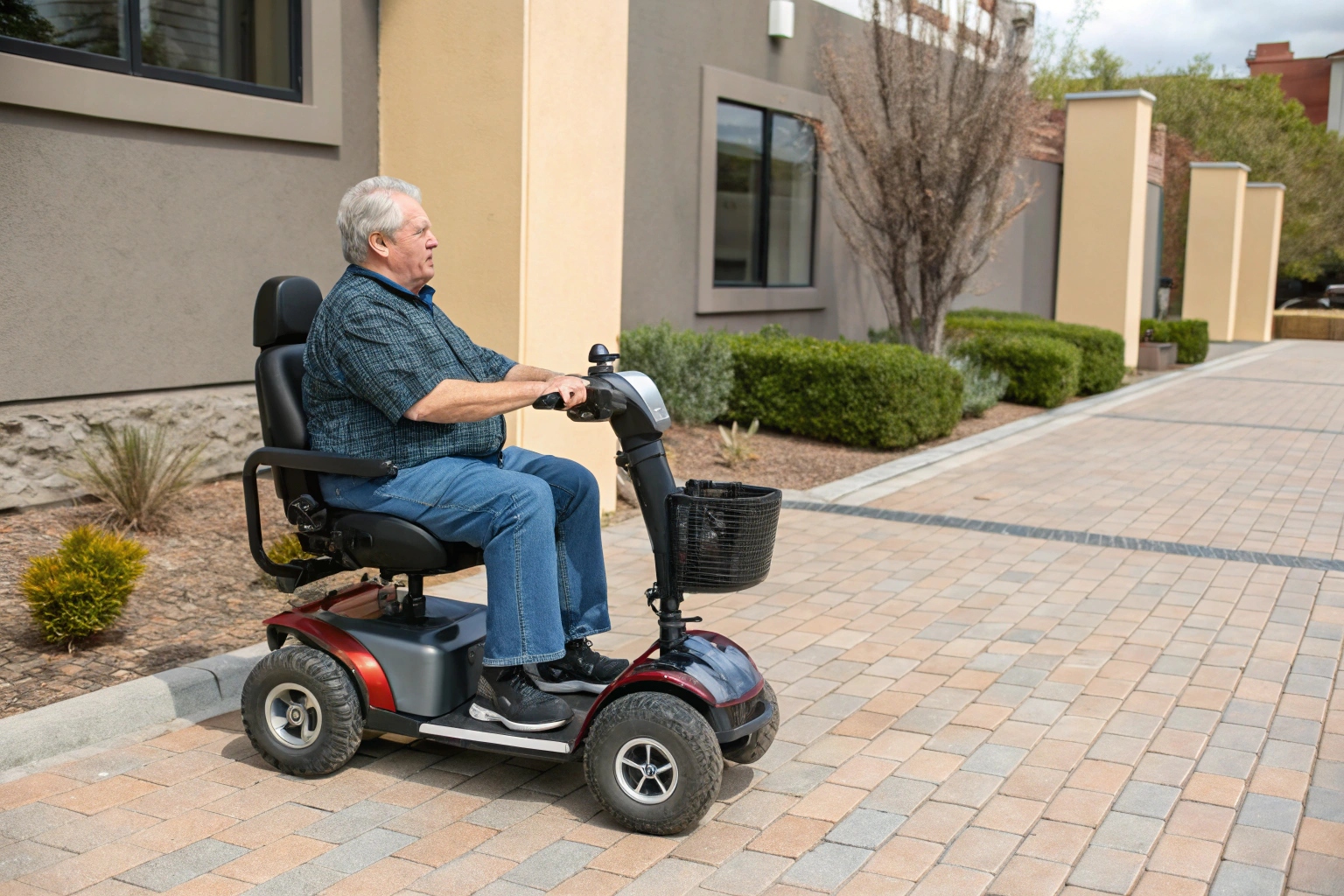
This is perhaps the most underrated point when sourcing scooters. A comfortable rider is a confident and attentive rider. When a user is being shaken by bumps and has to constantly adjust their seating position, their focus is not on the path ahead. Their body is tense, and their reaction time is slower. This is where high-end comfort features become critical safety features. A good suspension doesn't just feel nice; it maximizes the time that all four wheels are in contact with the ground, especially over rough patches or when turning. This improves traction and dramatically reduces the risk of tipping. From a factory perspective, the most comfortable scooters are also our most stable. They have a wider wheelbase and are heavier, which gives them a much lower center of gravity. I often get requests for lightweight, foldable scooters. While they are great for travel and smooth floors, I always caution my clients about their stability on everyday streets. For a user who relies on a scooter daily, a larger, more comfortable, and inherently more stable model isn't just a luxury—it's the safest choice.
Comfort's Direct Impact on Safety
- Better Stability: Full suspension and a heavier frame keep the scooter planted on the ground.
- Reduced Rider Fatigue: An ergonomic seat and delta tiller mean the user stays alert and in control for longer.
- Increased Confidence: A smooth, stable ride allows the user to focus on navigating their environment safely.
Pangwakas na Salita
In short, true comfort comes from larger scooters with great seats, full suspension, and pneumatic tires. Always match these features to your customer's daily travel needs for the best result.

